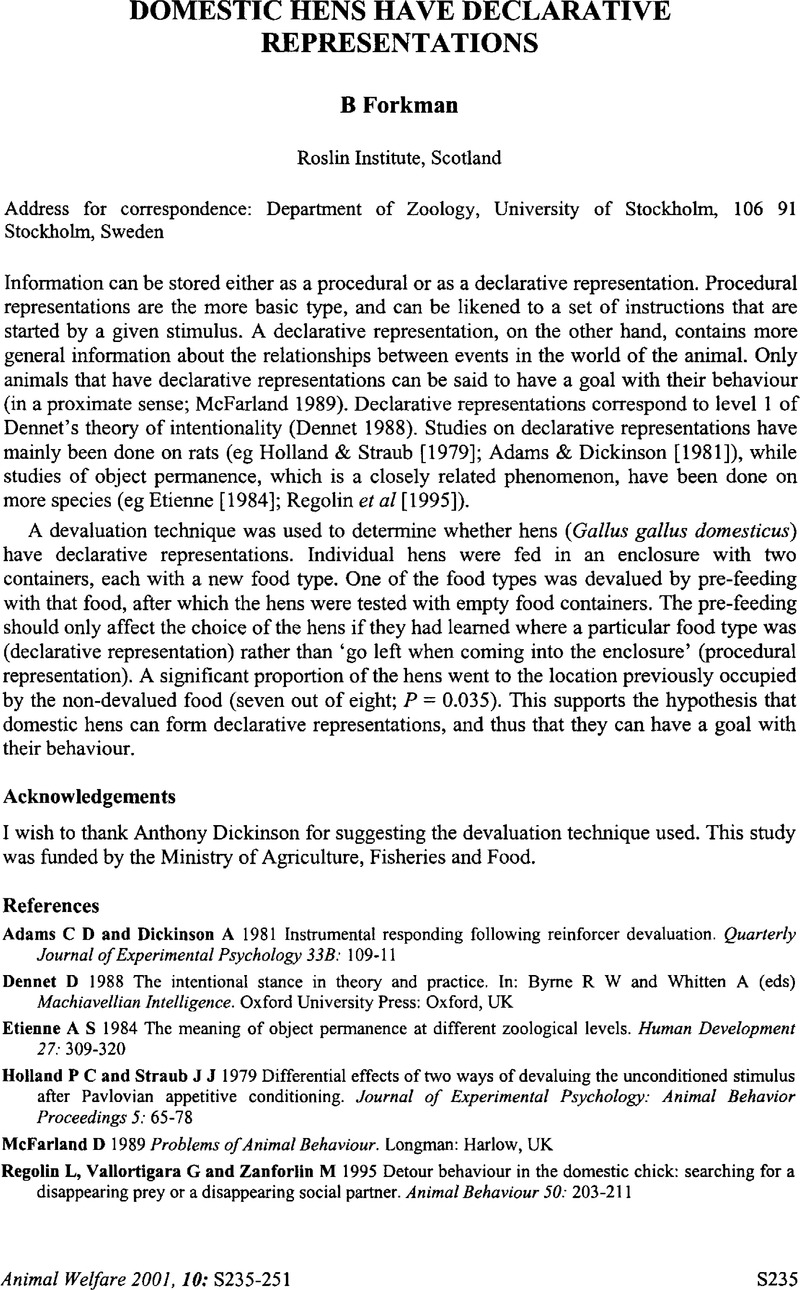Crossref Citations
This article has been cited by the following publications. This list is generated based on data provided by Crossref.
Lea, S E G
2001.
Anticipation and Memory as Criteria for Special Welfare Consideration.
Animal Welfare,
Vol. 10,
Issue. S1,
p.
S195.
Haskell, Marie J.
Coerse, Nancy C. A.
Taylor, Polly Anna E.
and
McCorquodale, Caroline
2004.
The Effect of Previous Experience Over Control of Access to Food and Light on the Level of Frustration‐Induced Aggression in the Domestic Hen.
Ethology,
Vol. 110,
Issue. 7,
p.
501.





